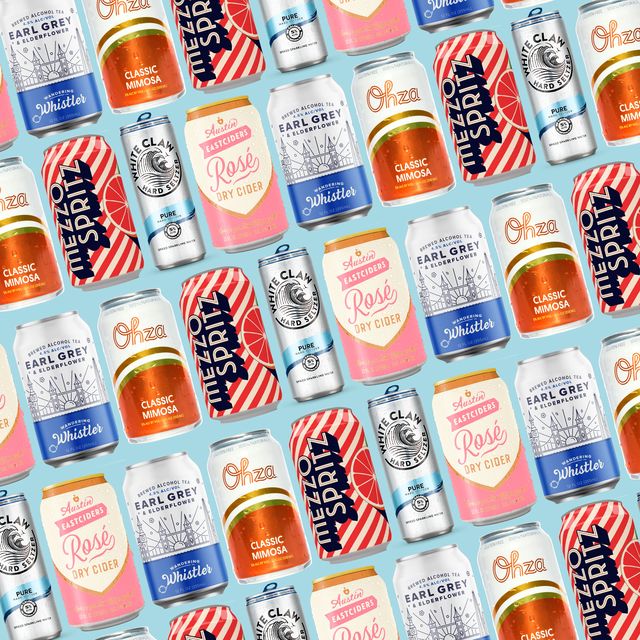Ready-to-Drink (RTD) beverages, once dismissed as sugary and low-quality products, have undergone a remarkable transformation, thanks to premiumization and the infusion of natural ingredients. Consumers today seek more than just convenience; they crave better tasting, high-quality beverages that align with their health-conscious choices.
The perception of canned cocktails as low-grade or party drinks has plagued the RTD market for years, deterring potential consumers. However, the tide has shifted with the entry of premium, well-established brands, both in the alcoholic and non-alcoholic sectors. Recognizable names like Absolut, Ketel One, Bombay Sapphire, Coca-Cola, Pepsi, Nescafe, and Jameson have embraced the canned RTD space, signaling a renaissance in the category.
Natasha Curtin, Vice President of Global Marketing for Bombay Sapphire, acknowledges the transformation, stating, “Production of better quality RTDs has completely turned the old stereotypes on its head, propelling the category into one of the top growth sectors in the alcohol industry.”
With renowned alcoholic brands entering the RTD market, the stigma surrounding the category is dissipating. Consumers are realizing that the absence of a bartender does not equate to a compromise in the ingredients or craftsmanship of the final product. Nathaniel Davis, CEO of Drinkworks, predicts that the future of premiumization in the category will focus on providing an authentic and personalized on-premise experience, ensuring a continuous upward trajectory for RTD beverages.
Interestingly, while alcoholic beverages seldom come with health claims, RTD alcoholic beverages present a unique opportunity for health-conscious consumers. As more individuals actively seek to reduce their alcohol intake, RTD alcoholic beverages with lower alcohol volumes become an attractive option. But the trend extends beyond just lower alcohol content, as consumers are drawn to products incorporating ingredients perceived to have a healthy halo effect.
Christopher Wirth, cofounder of Volley, a new 100% blue agave tequila-based seltzer brand, affirms this shift, stating, “Consumers are looking more now for what’s in products, what they’re putting into their bodies.” Volley’s initial lineup, featuring flavors like Zesty Lime, Spicy Ginger, Sharp Grapefruit, and Tropical Mango, appeals to health-conscious consumers seeking a guilt-free indulgence.
Despite the rise in demand for low-alcohol options, a substantial group still prefers RTD beverages with higher alcohol content. This has led to the emergence of high-strength seltzers, with notable releases boasting ABV percentages of 8% and 14%.
In a visually-driven era dominated by social media, sleek cans remain a powerful selling point for RTD beverages. Bright, eye-catching colors and simple designs attract consumers who seek products that are Instagram-friendly. As millennial consumers tend to endorse products through consumption, visually appealing brands gain a significant advantage.
Moreover, RTD beverages have an edge in terms of sustainability, as they have been packaged in cans from the start. Cans are more eco-friendly than plastics or glass bottles, boasting three times more post-consumer recycled material than their glass counterparts. The growing concern for sustainability, coupled with the demand for sleek aesthetics, ensures cans will continue to dominate the packaging landscape for RTD beverages.
While cans remain the dominant choice, some RTD beverage makers are exploring alternative packaging options for product differentiation and shelf stabilization. Brands like High West Distillery and BeatBox Beverages have ventured into glass bottles and carton packaging, respectively, targeting consumers who associate these materials with high-end products.
The rise of RTD beverages shows no signs of slowing down, with increasing numbers of consumers drawn to this category. RTDs appeal not only to traditional beer and wine buyers but also to on-the-go consumers looking for a variety of refreshing options, from coffee and tea for breakfast to snack and meal replacement beverages.
The global market for alcoholic RTDs is projected to reach a staggering US$85.5 billion by 2030, reflecting an impressive compound annual growth rate of 11.2% from 2022 to 2030, according to InsightAce Analytic. FactMR, in a recent study, estimates that U.S. sales for the alcoholic RTD category will hit US$146 billion by 2030, growing at an annual rate of about 20%.
To thrive in this burgeoning market, RTD brands must cater to consumer demands by offering sophisticated flavors, healthier ingredients, and a diverse range of alcohols. A successful brand strategy, featuring enhanced marketing and visually appealing design, will be crucial in capturing the hearts and palates of consumers in the fast-evolving RTD landscape.
The RTD beverage market has come a long way, transcending its past limitations and embracing premiumization. With consumers seeking both indulgence and health-conscious choices, the category’s growth prospects remain promising on a global scale.







Comment
No comments found.